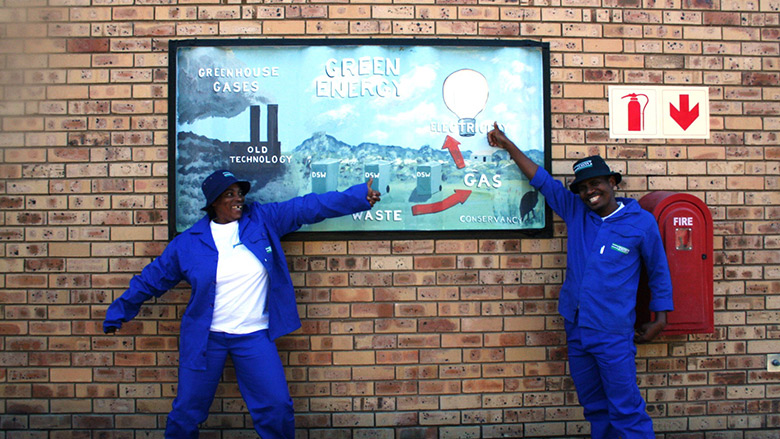DESCRIPTION
The Durban Municipal Solid Waste Project is a gas collection system at the Mariannhill landfill in Durban. The project uses some of the recovered gas to generate renewable energy; this is, in turn, fed to the municipal grid to replace electricity based on fossil fuels. The World Bank Group’s Prototype Carbon Fund will purchase approximately 337,000 carbon credits from the project.
The Durban Municipal Solid Waste Project was the first of its kind to be registered in Africa under the Clean Development Mechanism. The project is being implemented by Durban Solid Waste (DSW), which is the municipal solid waste department of eThekwini Municipality. The electricity produced from the landfill gas is sold to the municipal electricity department. The Mariannhill landfill was declared a National Conservancy Site in 2004, the first time a landfill, has been incorporated into an ecosystem restoration site.
CONTEXT
When the project started in 2004, no landfills in South Africa collected and used the methane that they emitted. Today, the minimum requirements for waste disposal at landfills include gas monitoring at all large, hazardous landfills and the periodic reporting to national authorities if the concentration of soil gas exceeds one percent. In addition, permanent venting systems are required if methane concentrations in the air exceed five percent. However, gas flaring, gas collection, and the use of methane as a renewable energy are still not required by law.
RESULTS AND ACHIEVEMENTS
- As of April 2015, the project has issued about 181,000 carbon credits.
- The project is providing the municipality with about 3MW of electricity.
- The Mariannhill landfill now serves as an important natural corridor for migratory species and is contributing to preserving an indigenous ecosystem and minimizing biodiversity loss in the area. In addition, nearly 2,000 people have been educated in the landfill’s conservation and waste management principles.
- The project has improved the air by reducing the amount of landfill gas released into the atmosphere at the landfill and by displacing electricity from the grid and reducing the negative effects of coal transport and coal mining (e.g., dust and acid mine drainage). It also lessens the risk of dangerous methane gas concentrations and reduces nearby residents’ exposure to the odor.
- The methodology for greenhouse gas accounting from “use or flaring of landfill gas” was developed for this project. This methodology subsequently served as the basis for the development of the UN’s consolidated methodology for "Flaring or Use of Landfill Gas,” which is now used worldwide.
- The landfill site has won numerous awards, including the Dubai International Award for Best Practices to Improve the Living Environment (2008); the Honorary Energy Globe Award for Sustainability (2009); and several conservancy and green energy awards in South Africa. In addition, the project made KPMG’s list of “100 most innovative and inspiring urban infrastructure projects in the world.”
